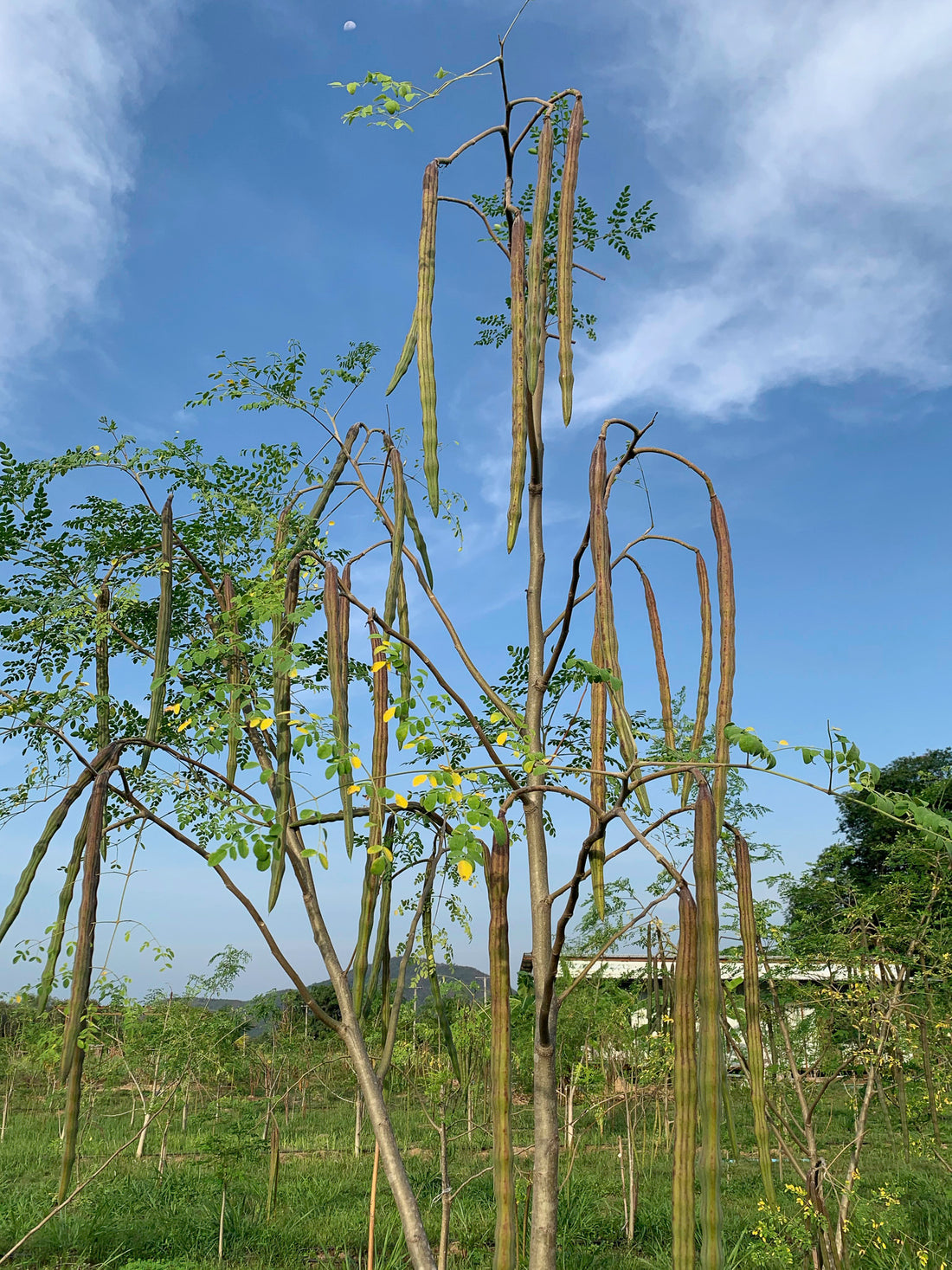
the origins of moringa
Share
Moringa oleifera is indigenous to the southern foothills of the Himalayas, across northwestern India, Pakistan and Nepal. Fast-growing and drought-resistant, Moringa oleifera reaches heights of around 10 - 12 meters. The name moringa is derived from murungai, the Tamil word for drumstick, a reference to the long, stiff three-sided, oil bearing seed pods which hang down in clusters from thin branches, lined with delicate, feathery leaves.
There are 13 different species included within the Moringaceae family that are native to Africa and Asia. The plants range in size from tiny herbs to massive trees, with Moringa oleifera being the most used and studied. As one of the most nutrient-dense plants on the planet, Moringa is also called ‘Miracle Tree’ ‘Tree of Life’ and ‘Mother’s Milk.’ Moringa oleifera is now grown in over 82 countries and is one of the most widely cultivated plant species throughout the world.
Moringa has a rich history of traditional uses across the world. The Romans were introduced to it by the Greeks who used it in the art of perfumery. In ancient Egypt it was part of the very complex Pharaonic medicine practice and death rituals. Jars of moringa oil have been found in the tombs of Egyptians including the tomb of Maya, which contained ten jars of oil. Warriors in ancient India were fed an extract of the moringa leaf going into battle to enhance their strength and improve stamina. Moringa’s nutritional and healing properties have been prized for centuries across Asia and Africa, where the young leaves, stalks and pods are eaten as a vegetable.
Ayurvedic medicine says that Moringa oleifera can prevent 300 diseases and the ancient system has utilised moringa for preventive and curative purposes. The prized plant has even been studied in the Virudhunagar district of Tamil Nadu, southern India, where Moringa is among the species used by practitioners of traditional Siddha healing, one of India’s oldest systems of medicine.